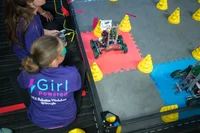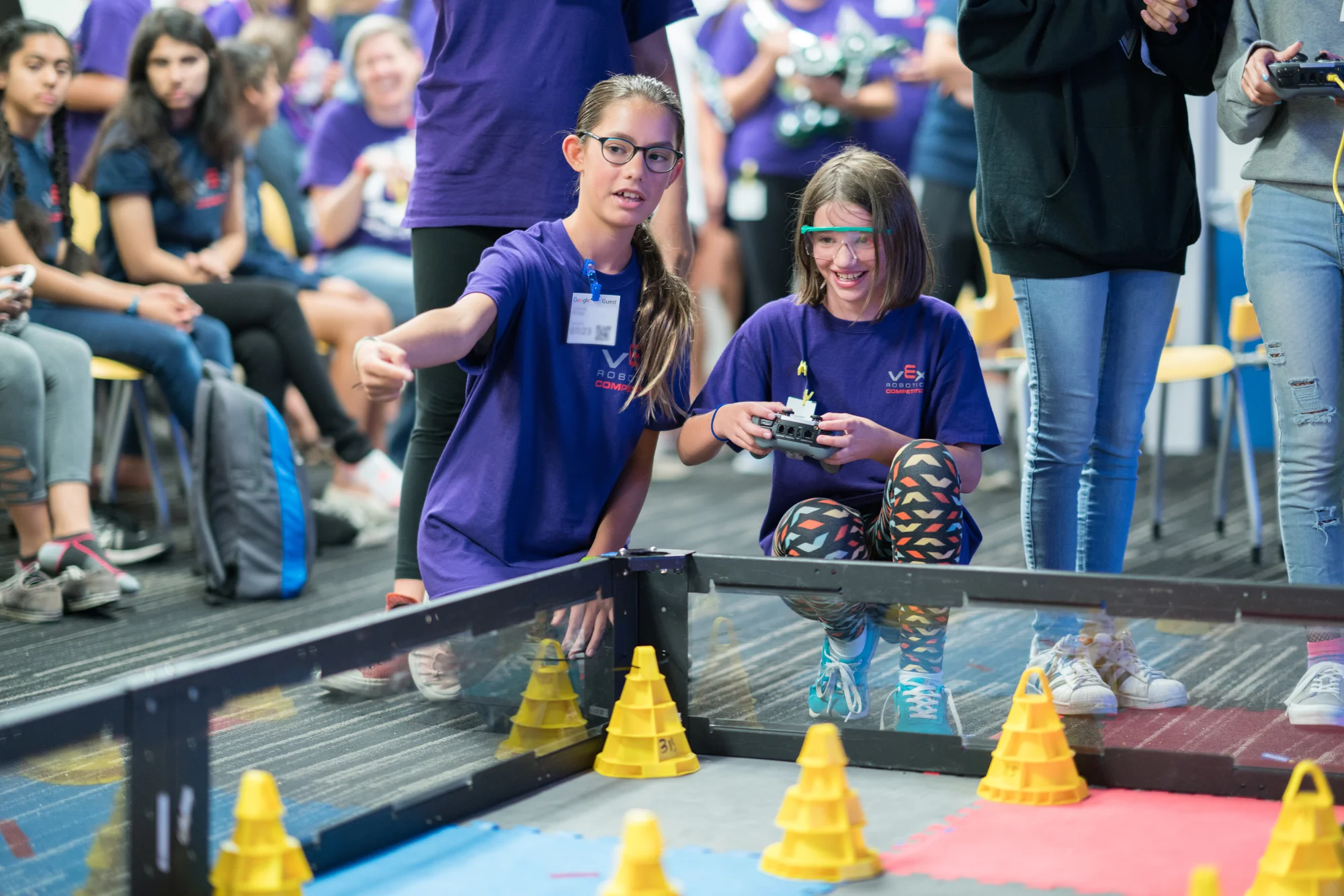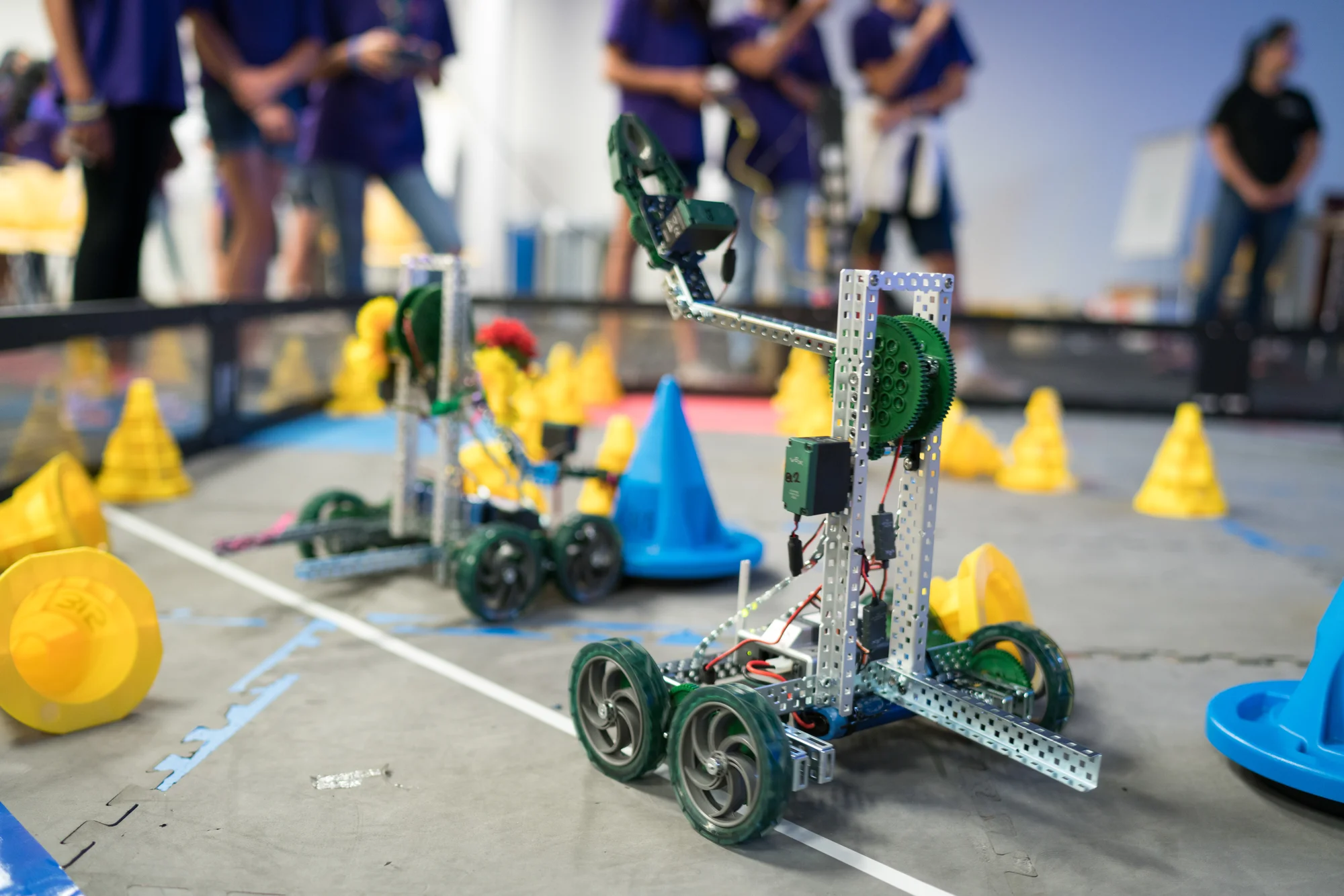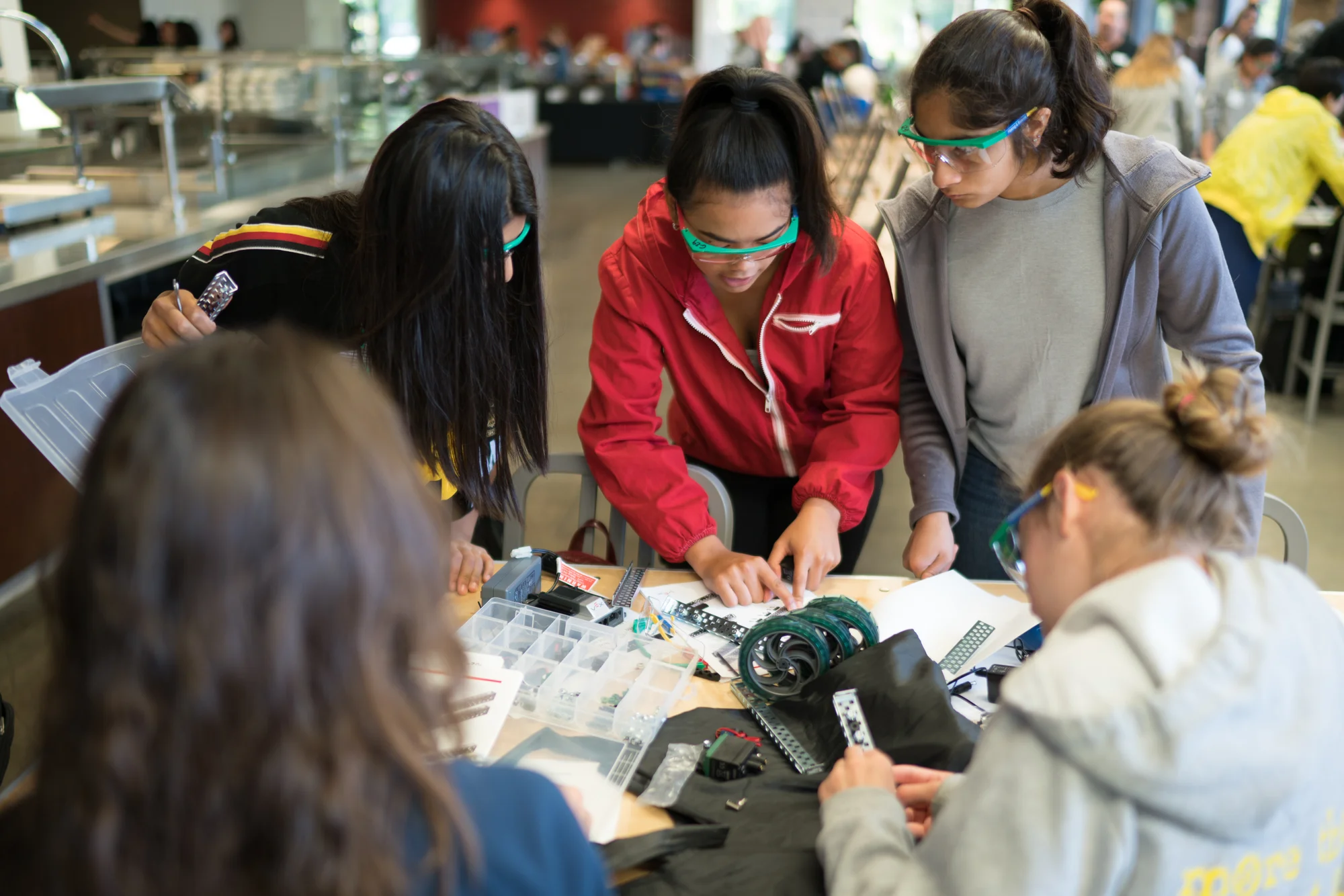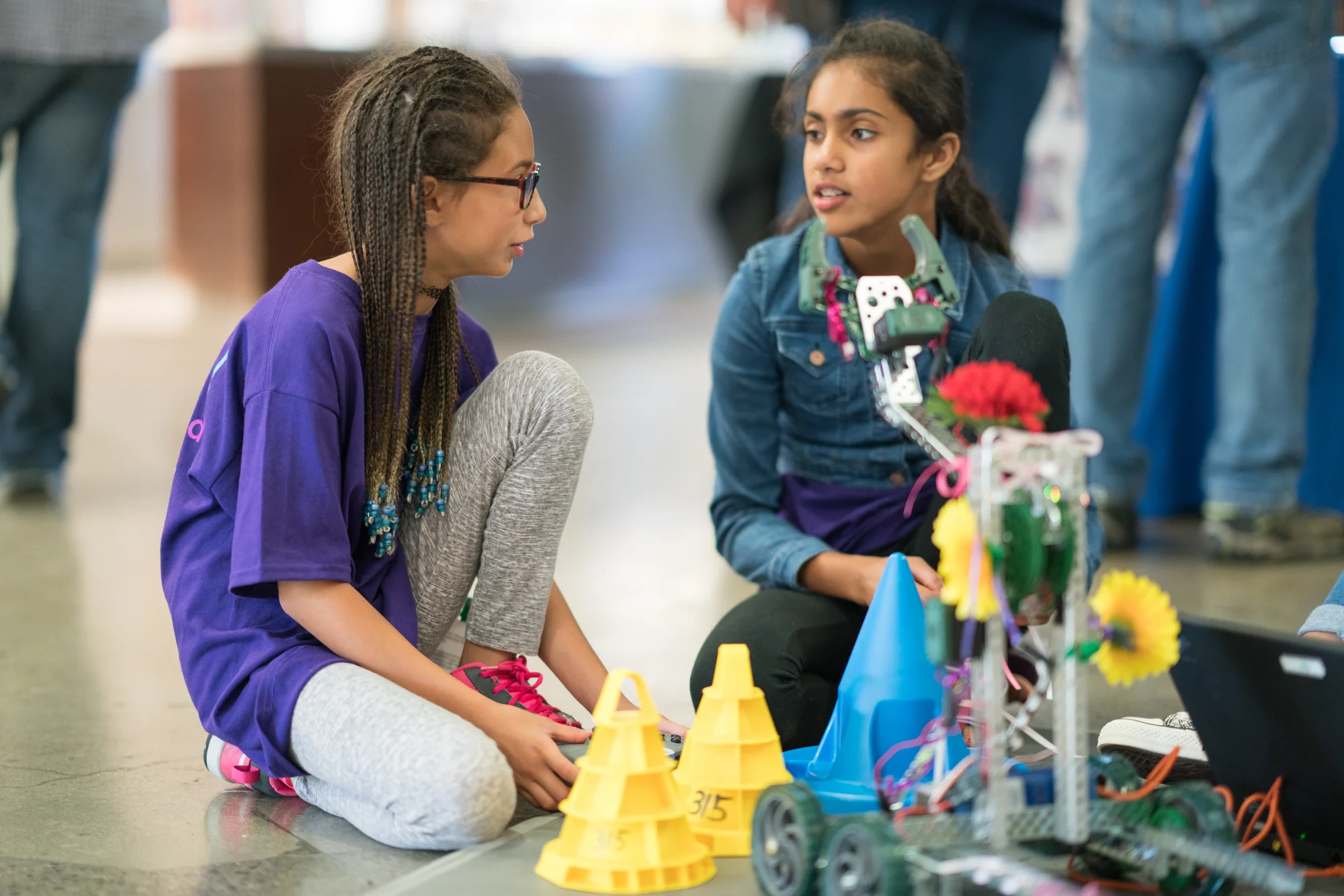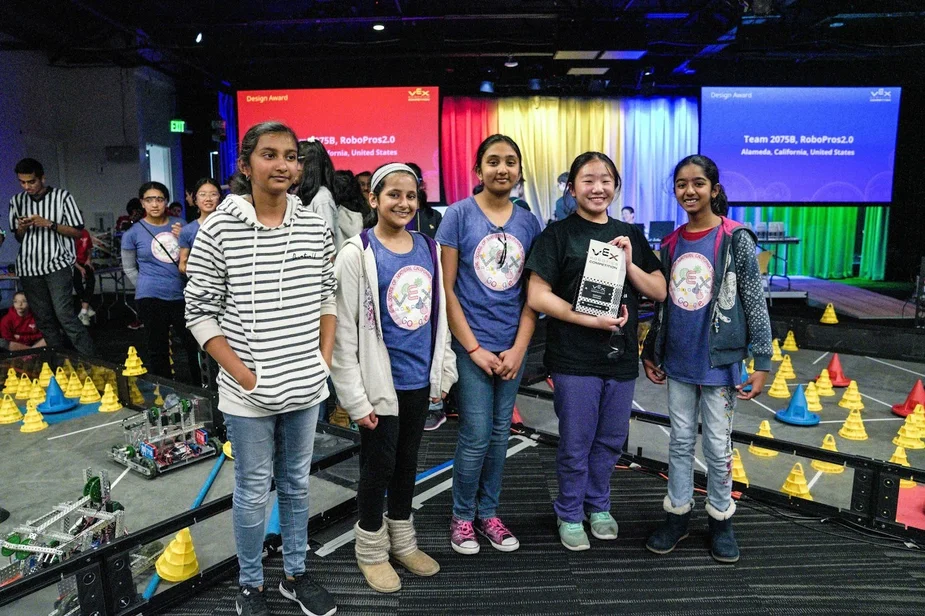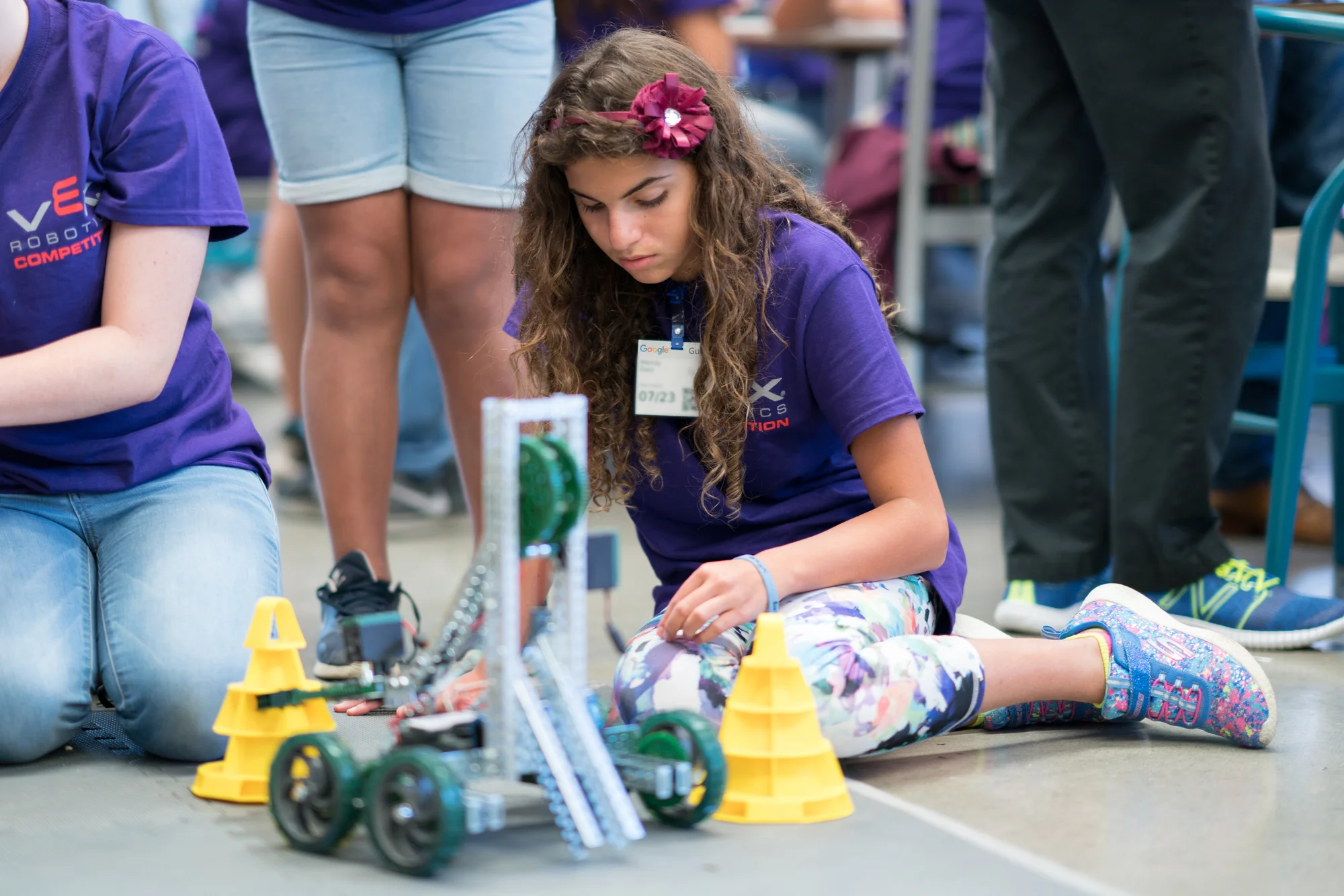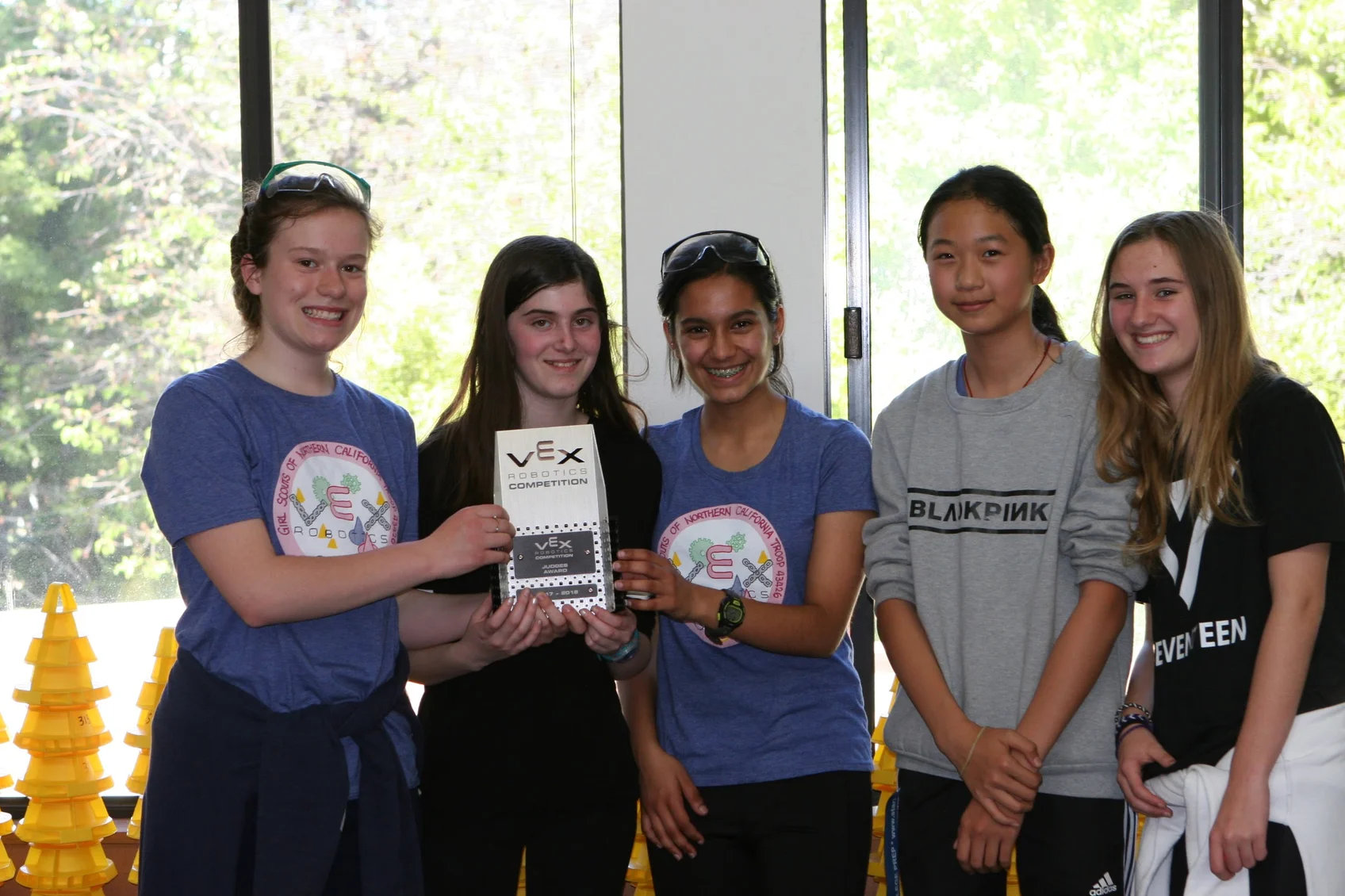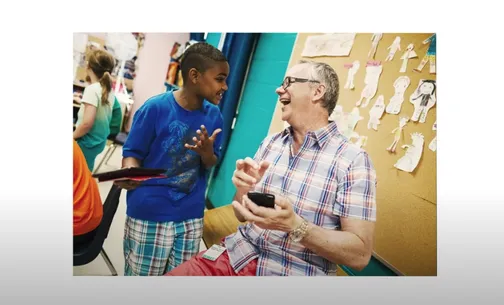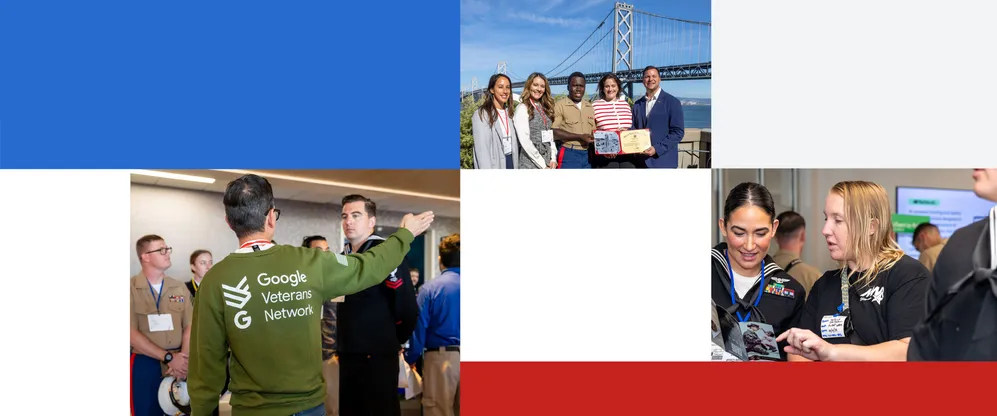Leveling the STEM playing field for girls, one robot at a time
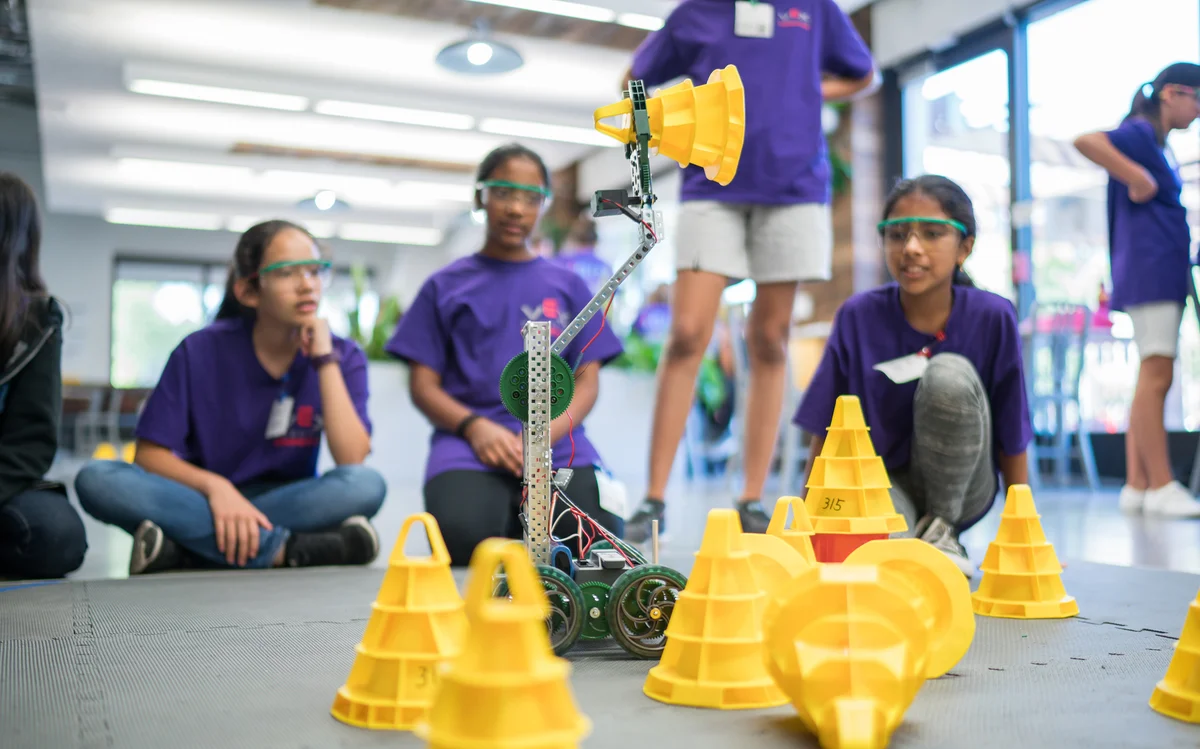
I was introduced to competitive student robotics seven years ago, when my fifth-grade son developed an interest with his friends. My daughter followed in those footsteps, and through their experiences, I saw how differently STEM is presented to and approached by boys and girls. I wanted to help level the playing field by making it easier for girls to develop a passion for STEM. I’d already built a space in my garage to coach kids about robotics, and I decided it was time to expand the effort so that more girls could get involved.
Last year, along with a scrappy group of Googlers and high school students, I hosted a workshop with the VEX Girl Powered initiative and eventually partnered with the Girl Scouts of Northern California. We developed an after-school program where middle and high school age girls work on their robots with Google volunteers and prepare for several competitions. We just wrapped up our first year of the program, with 68 girls participating across 11 teams. Three of the middle school teams—{Access Denied}, Lightning Bots and RoboPros2.0n—qualified for state championships!
Here’s what a few of Google’s volunteers—Rebecca Shapley, a business analyst for Google’s Developer Platform team; Nupur Garg, a software engineer on TensorFlow; and Dave Wu, Silicon Architecture EPM at Nest—had to say about their experience working with the girls:
Tell us about the project your team worked on.
Rebecca: The girls built a robot to lift and move cones within a 10’ by 10’ game-zone. The game is designed to reward both simple robots and additional complexity. A simple robot might lift a big cone and move it to a scoring zone, but a more complex robot will put a smaller cone on the big cone, and drive over a pipe to put it in a higher scoring zone. An ace robot will put the smaller cones in large stacks, and be able to score points autonomously, without a human driver, in the first few seconds of the game.
What’s been the most rewarding part of working with the girls?
Nupur: None of the girls on my team had previously done anything related to robotics, so the most rewarding part of working with the girls was seeing their growth. They went from being new to everything to taking ownership of what they wanted to accomplish each session. Over the last month of the program, they decided to build a more competitive robot that tackled elements of the game they had not previously attempted. There is nothing that replaces the feeling of seeing students grow and knowing you played a part in that.
Dave: It was rewarding to start from scratch and then design, redesign, refine and work as a team to compete and win various competitions.
Rebecca: I didn’t have a background in robotics, so I really enjoyed learning vicariously through the girls! It also threw into relief for me those other skills that support successful technical development, like scientific problem solving, designing, work planning, organizing group efforts and decisions, and systematic thinking. Even though I didn’t know much about robots, I could contribute by modeling these skills, and know that this could translate to the rest of their lives too.
Is there a standout moment from your experience as a coach?
Rebecca: About six weeks in, all of us coaching the team could tell that a shift had happened. Their sense of ownership over the robot blossomed. As adults we stepped back and focused on getting the right balance in supporting their success while letting them lead.
Dave: Watching the girls work hard in the last few sessions leading to the first competition and maturing together as a team during the competition.
Nupur: When I asked the girls at their last competition if they wanted to do this again next year, they all eagerly told me they wanted to stay with the same team and work on a more competitive robot next year. They were confident that they could build something completely on their own that could compete with the more experienced teams in the high school division.
What can be done to get more girls involved in robotics?
Rebecca: More opportunities and more skilled people mentoring! The all-girls teams were great—the ratio of girls represented in mixed teams was substantially lower. Successful teams need time, practice space, robot pieces, mentoring, parent support, and design support.
Dave: Provide spaces and materials (like what Google did) so that more girls can get involved, and expose more parents to the program.
Nupur: It’s important to create a positive environment where the girls can learn and where failure is encouraged.
This summer, we hope to bring even greater awareness to STEM with our Girl Powered workshop in August. If you’re interested in signing up for future robotics workshops, you can indicate interest via this form.
